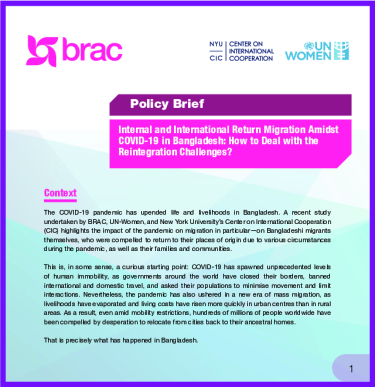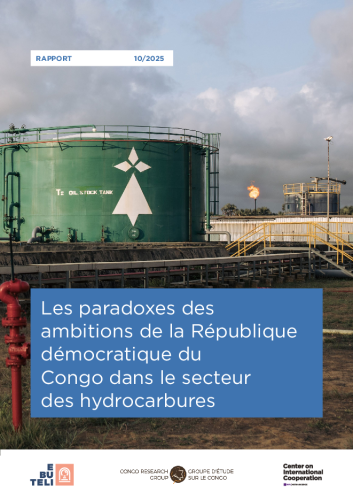The COVID-19 pandemic has upended life and livelihoods in Bangladesh. This report calls attention specifically to the impact of COVID-19 on migration – on Bangladeshi migrants themselves, who were compelled to return to their places of origin due to various circumstances during the pandemic, as well as their families and communities.
COVID-19 has spawned unprecedented levels of human immobility, as governments around the world have closed their borders, banned international and domestic travel, and asked their populations to minimize movement and limit interactions. Nevertheless, the pandemic has also ushered in a new era of mass migration, as livelihoods have evaporated and living costs have risen more quickly in urban centers than in rural areas.

As a result, even amid mobility restrictions, hundreds of millions of people worldwide have been compelled by desperation to relocate from cities back to their ancestral homes. This reverse urbanization has mostly escaped global attention. Pandemic migrations briefly dominated headlines following India’s lockdown in March-April 2020. However, little global attention has been paid to them since then or in other contexts. Demographic and Socioeconomic Changes Induced by the COVID-19 Pandemic in Bangladesh aims to help fill this gap by focusing on the causes and consequences of pandemic migration in Bangladesh. A collaboration between BRAC, UN Women, and New York University’s Center on International Cooperation (CIC), the study looks, in particular, at the demographic, social, and economic changes that took place within secondary towns, peri-urban (upazila sadars) regions, and rural areas after migrants returned home en masse in early 2020.
To understand how these reverse migrations impacted household and community welfare, qualitative and quantitative research targeted 21 of Bangladesh’s 64 districts through multistage systematic random sampling. A focus was placed on those districts most prone to (reverse) migration. Subsequently, one upazila (representing rural areas) and one municipality (representing peri-urban and urban areas) were randomly selected from each of the focus districts. Quantitative research utilized an analytical approach, while qualitative research maintained an interpretive approach. Primary data collection was conducted using a survey that included a semi-structured questionnaire and was carried out from December 10 to 25, 2020 in select villages and towns. Ultimately, 6,370 households were surveyed (60% from rural areas and 40% from urban and peri-urban settings). Roughly 26.5% of the surveyed households included at least one migrant worker (internal or international), and 21.85% of households were female-headed. Of the migrant households, 60% had returnee migrants (i.e., migrants who had returned to their ancestral homes during the pandemic).
-
Read the policy brief: Internal and International Return Migration Amidst COVID-19 in Bangladesh: How to Deal with the Reintegration Challenges?
-
Read the full report: Demographic and Socioeconomic Changes Induced by the COVID-19 Pandemic in Bangladesh
-
Watch the dialogue hosted by BRAC (June 23, 2021)



